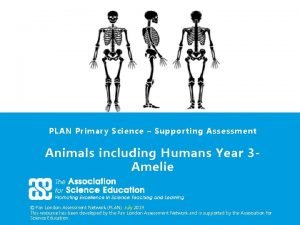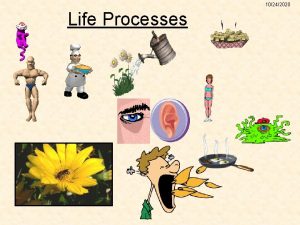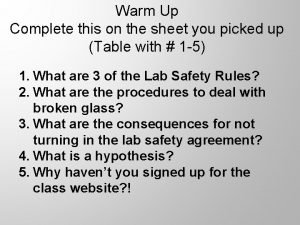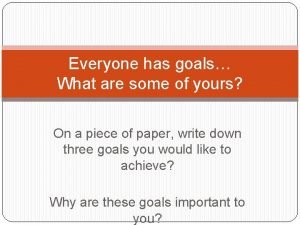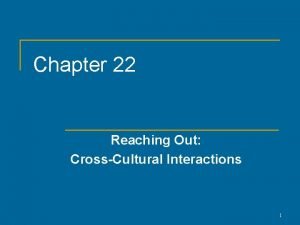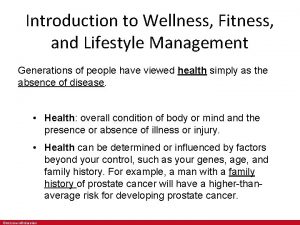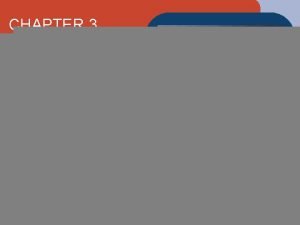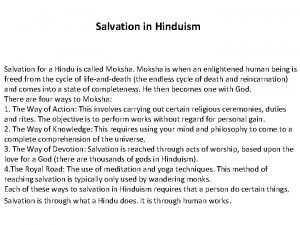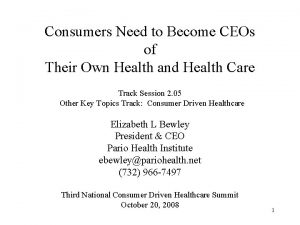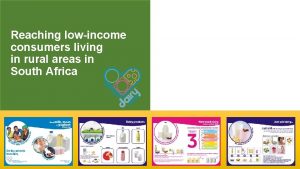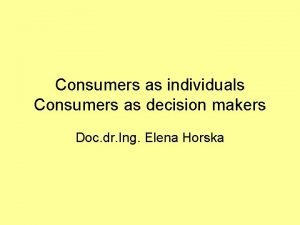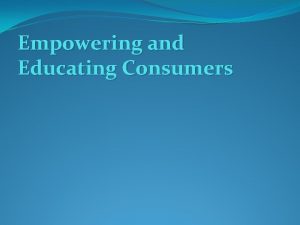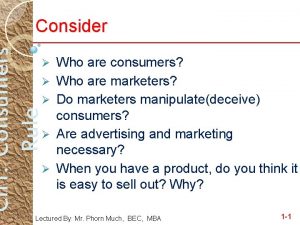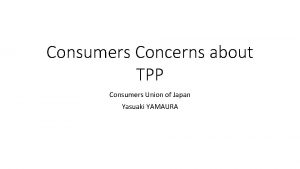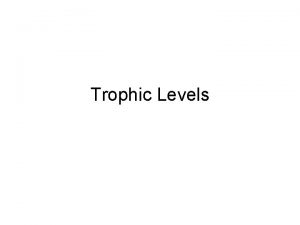Reaching consumers with their own health information David

























- Slides: 25

Reaching consumers with (their own) health information David Lansky, Ph. D. Markle Foundation September 9, 2005 1

IOM’s Six “Aims” for U. S. Health Care Safe—avoiding injuries to patients from the care that is intended to help them. Effective—providing services based on scientific knowledge to all who could benefit and refraining from providing services to those not likely to benefit (avoiding underuse and overuse, respectively). Patient-centered—providing care that is respectful of and responsive to individual patient preferences, needs, and values and ensuring that patient values guide all clinical decisions. Timely—reducing waits and sometimes harmful delays for both those who receive and those who give care. Efficient—avoiding waste, including waste of equipment, supplies, ideas, and energy. Equitable—providing care that does not vary in quality because of personal characteristics such as gender, ethnicity, geographic location, and socioeconomic status. 2

The “Design Rules” that depend on patients 1. Care based on continuous healing relationships. 2. Customization based on patient needs and values. 3. The patient as the source of control. 4. Shared knowledge and the free flow of information. 5. Evidence-based decision making. 6. Safety as a system property. 7. The need for transparency. 8. Anticipation of needs. 9. Continuous decrease in waste. 10. Cooperation among clinicians. 3

Potential of a “personal health record” Giving individuals access to and control over their personal health information enables: 4 n Patients better able to maintain health and manage their care n More reliable care; e. g. , in emergency situations n Greater efficiency, less duplication of tests and quicker access n Improved satisfaction, lower cost and greater choice n Improved health care quality and safety n More effective communication and collaboration between patients, doctors, pharmacies, and others

What is a “personal health record”? § No good answer today § Some of its attributes: § Person controls own PHR § Contains information from entire lifetime § Contains information from all providers and self § Accessible from any place, at any time § Private and secure § Transparent – strong audit trail § Interactive across one’s health care network 5

Retrieving your health information Pharmacy Q Hospital X Pharmacy R Hospital Y Laboratory School Nurse Payer Data Center (health plan, Medicare) Primary Care Doctor Specialist Doctor 6 Home Monitoring Device

The Person as an Information Hub Pharmacy Q Hospital X Hospital System Data Hub Hospital Y Laboratory Primary Care Doctor Specialist Doctor 7 Pharmacy R Pharmacy Data Hub School Nurse Personal Health Record Payer Data Center (health plan, Medicare) Home Monitoring Device

8

9

10

11

12

13

The PHR Environment - 2005 Paper: Remains the only available or practical means for many people. Electronic: Carries much greater potential for rapid, convenient and secure data sharing over time. n Desktop-based: Consumers may store PHR data locally on the hard drive of within software applications on their personal computer. n Web-based: Applications may store PHR data on a secure Web server. n Portable devices: Products that enable consumers to store personal health information on smart cards, personal digital assistants (PDAs), mobile phones or USB compatible memory devices. Each data-storage medium may be preferred by different types of patients. No matter the electronic data storage medium, the Internet will probably provide the best way to update the PHR with information from professionals and institutions. 14

People vary in their preference for PHR media Age 18 -44 Age 45 -64 Age 18 -44 45 -64 Age 65+

PHR services today Patient education, self-care content and consensus guidelines Secure messaging Appointment scheduling and reminders Preventive service reminders Adherence messaging Patient diaries (pain, symptoms, side effects) Longitudinal health tracking tools (charts, graphs) Drug interactions checking Rx refills Financial information, such as Explanation of Benefits 16

Degree of interest in PHR High reported desire for specific functions: n Email your doctor – 75% n See test results – 63% n Look for mistakes in my record – 69% Principal interest by caregivers, frequent health system users (chronic illness, elderly), computer savvy Primarily offered as portal by large delivery systems Loyalty marketing Offering only a ‘view’ of EMR “Untethered” PHRs not proving viable 17

Current interest in PHR tools Thirty five percent of respondents would use seven or more features of a PHR today if it were available. Almost all respondents (91 percent) are very concerned about their privacy and keeping their health information secure. However, most people believe that technology provides appropriate protections. People who suffer from chronic illness and/or are frequent health care users are less concerned about privacy and security. For example, 41% of the healthy would not want to receive lab results online due to privacy concerns, compared with 36% of those with chronic conditions. 18

PHR sponsors 19

PHR suppliers 20

PHR challenges 21

Research findings about public messaging People have a limited and inaccurate understanding of health information technology issues today. The American public is largely unaware of, but receptive toward, the potential value of PHRs. Most people want convenient access to and control over their health information, and many express a desire to check the accuracy of the records that clinicians keep on them. Most people do want certain healthcare services and information available electronically, particularly when it represents a convenience. The preferred medium of a PHR varies by age, with younger people more receptive to electronic tools and older people more receptive toward paper. People prefer to work with their doctors to access these services. 22

Responses to Mock Ads

Implications for Medicare Focus on benefits, not features Prescription drug benefit is opportunity Migrate the portal to become personal medication list Experiment with authentication, portability, integration issues Educate beneficiaries about: 24 n Value of seeing own information n Expectation that all providers share info n Specific risks associated with medications

David Lansky, Ph. D. Dlansky@markle. org www. connectingforhealth. org 25
 Alligator food web
Alligator food web Primary producers
Primary producers What type of sae is when you own your own business
What type of sae is when you own your own business Eu food information for consumers regulation
Eu food information for consumers regulation Distinguish between education and health services
Distinguish between education and health services Animals can make their own food
Animals can make their own food Animals can make their own food
Animals can make their own food Activating students as owners of their own learning
Activating students as owners of their own learning Seven life processes
Seven life processes What raw materials does a plant need for photosynthesis
What raw materials does a plant need for photosynthesis Green plants make their own food by photosynthesis
Green plants make their own food by photosynthesis Why did gandhi encourage indians to weave their own cloth?
Why did gandhi encourage indians to weave their own cloth? Organisms that make their own food
Organisms that make their own food Everyone has their own goals
Everyone has their own goals Every country has its own traditions and customs
Every country has its own traditions and customs Reaching for the infinite heart
Reaching for the infinite heart Chapter 22 reaching out cross-cultural interactions
Chapter 22 reaching out cross-cultural interactions Introduction to wellness fitness and lifestyle management
Introduction to wellness fitness and lifestyle management Rank the strategies for reaching global markets
Rank the strategies for reaching global markets Chapter 22 reaching out cross-cultural interactions
Chapter 22 reaching out cross-cultural interactions Chapter 22 reaching out cross-cultural interactions
Chapter 22 reaching out cross-cultural interactions Salvation in hinduism
Salvation in hinduism Reaching out from within
Reaching out from within Forgetting those things which are behind nkjv
Forgetting those things which are behind nkjv Living beyond yourself
Living beyond yourself When i found the joy of reaching your heart
When i found the joy of reaching your heart






